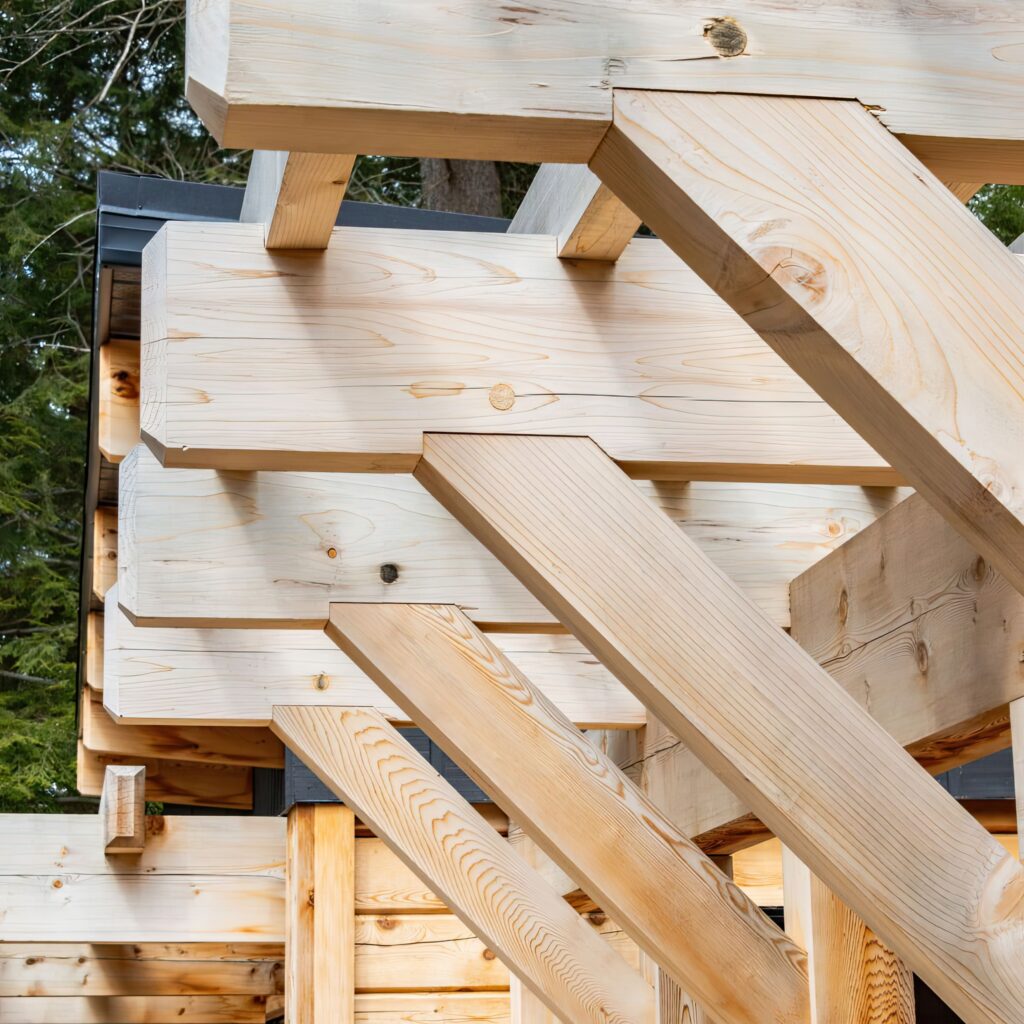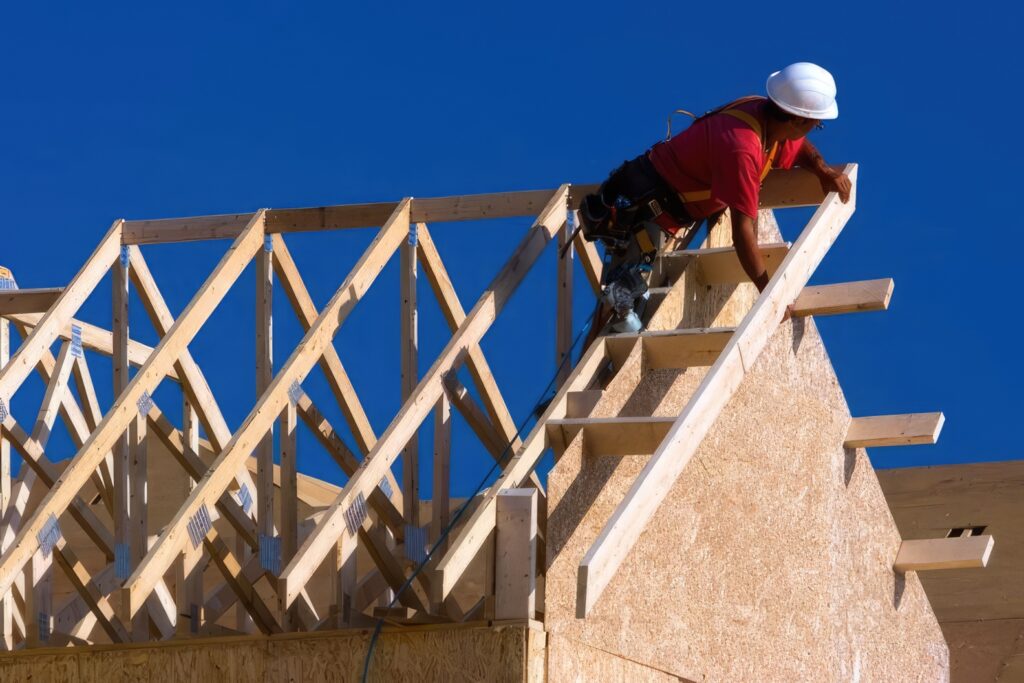The skeleton of a building, rising raw against the sky, isn’t just wood and steel; it’s a performance. Framing the walls and raising the roof constitute a complex, dynamic symphony of coordinated effort, where individual actions must harmonize perfectly to create structure, shelter, and the promise of space. Raising a wall and positioning a truss are not isolated tasks; they are pivotal movements within this intricate orchestration, demanding precision, trust, and an almost intuitive understanding between every member of the crew.

The overture begins long before the first stud is lifted. It resonates in the meticulous layout snapped onto the foundation – crisp blue lines dictating the exact placement of every wall. It hums in the pre-assembly: the rhythmic pounding of hammers (or the staccato bursts of nail guns) as plates are cut and stacked, studs meticulously measured and marked for openings. Each carpenter, working in concert, transforms piles of lumber into wall sections – a chorus of components ready for their cue. Communication here is constant and economical: measurements called out, plates aligned, corners checked and rechecked with laser levels and squares. It’s the quiet, focused preparation of the orchestra tuning before the conductor lifts the baton.
Then comes the crescendo: Raising a Wall. This is where individual effort dissolves into collective power. A section of wall, often tall, heavy, and unwieldy, cannot be conquered alone. A call goes out – “Wall walking!” or simply a nod – and crew members converge. Positions are assumed instinctively: strong backs at the ends, steady hands along the length. Lifting commands are clear and synchronized: “Ready? Lift on three! One… two… THREE!” The wall groans as it pivots off the deck, gravity fighting the combined human force. Muscles strain, boots dig into the subfloor, breath comes in short bursts. This is pure, physical coordination.

But brute force alone is useless. As the wall ascends, eyes constantly scan. Is it plumb? Is it aligned perfectly with the snapped lines below? Fingers guide the bottom plate onto its mark. Shouts ring out: “South end high!… Down a quarter!… Hold it!… GOOD!” Temporary braces fly into action – long 2x4s wielded like batons, swiftly nailed at precise angles to hold the wall upright against the wind and its own weight. One wall section secured, the crew barely pauses. They move as a unit to the next section, repeating the lift, the alignment, the bracing, ensuring corners meet with exactitude. The rhythm builds: lift, position, brace, repeat. Each wall raised is another chord struck firmly in the growing structure, defining rooms, hallways, the very boundaries of the future interior. It’s a ballet of brawn and precision, demanding absolute trust that each member will hold their line, push their weight, and react instantly to micro-adjustments.
The structure gains height, and the focus shifts upwards, introducing a new, more aerial movement: Positioning a Truss. Roof trusses, engineered webs of wood or metal, are the complex melodies that will crown the structure. Their arrival often signals a shift in gear and tools. The symphony incorporates heavier machinery – a crane becomes the principal instrument, its operator a crucial soloist requiring immense skill and spatial awareness.
The ground crew acts as the string section, preparing the trusses. They ensure each is oriented correctly, that temporary braces are attached, and that lifting points are secure. Communication with the crane operator is paramount, often via hand signals or radios. A misheard signal, a moment of inattention, can have disastrous consequences. The crane’s cable descends; the ground crew hooks the truss efficiently. The operator takes the strain, lifting the massive, often delicate, structure clear of the ground.
Now, the aerial ballet begins. The crane operator, guided by the signals from the ground and the roof crew, maneuvers the truss through the air with astonishing delicacy. Below, spotters watch for obstacles. Above, waiting on the walls and temporary platforms, the roof crew stands ready – the percussion section poised for impact. Their eyes track the truss’s approach, judging its swing, its height, its rotation. As it nears its designated position – marked precisely on the top plates – hands reach out, not to grab wildly, but to guide.
“Easy!… Left hand down!… Steady!… Back two inches!… DROP IT!” The commands are sharp, urgent, yet controlled. The truss must land exactly on its bearing points. A fraction of an inch off can cascade into major alignment issues later. Crew members use pry bars or simply their strength to nudge the massive component into its final position, like violinists tuning a string to perfect pitch. Immediately, temporary braces are nailed to secure it plumb and true before the crane releases its tension. This sequence repeats, truss after truss, each one adding another layer to the harmonic structure overhead. The crew on the roof moves with practiced agility, navigating the skeletal framework, hammering braces, checking alignment with strings stretched taut across the peaks. It’s a high-wire act demanding balance, spatial awareness, unwavering focus, and absolute reliance on the crane operator and fellow workers below and above.

The true symphony lies in the interplay between these movements. The framers raising the walls must achieve near-perfect level and squareness; otherwise, the trusses won’t seat correctly, throwing the entire roof geometry into discord. The wall bracing must be robust enough to withstand the lateral forces as trusses are swung into place. The truss crew relies entirely on the stability and accuracy of the walls beneath them. Meanwhile, the ground crew must anticipate the needs above, keeping the flow of trusses steady, managing materials, and ensuring the crane operator has clear lines of sight and communication. Every action ripples through the ensemble. A misaligned wall stud discovered late can halt the truss setting. A delay in bracing one truss holds up the crane from lifting the next. A misunderstood signal can send dangerous vibrations through the entire operation.
This coordination isn’t just procedural; it’s deeply human. It’s built on shared experience, unspoken understanding, and mutual respect for the risks and skills involved. It’s the veteran framer sensing the new guy struggling with a brace and stepping in without a word. It’s the crane operator feeling the wind shift and adjusting the lift before the crew on the roof even calls it out. It’s the shared moment of satisfaction when the last truss is secured, the ridge line runs straight and true, and the skeleton is complete – a complex three-dimensional structure born from countless coordinated actions.
When the final truss is braced and the last temporary nail is driven, the symphony reaches its powerful finale. The chaotic energy coalesces into order. The skeletal frame stands complete: walls defining vertical space, trusses arcing overhead to enclose it. From the seemingly disjointed efforts – the hammer blows, the shouted commands, the groan of lumber, the whine of the crane – emerges a coherent, stable form. It’s geometry made manifest, a testament to the silent language of teamwork. Raising a wall and positioning a truss are not merely construction tasks; they are the essential, interdependent movements in the grand symphony of building, where coordinated human effort transforms raw materials into the promise of shelter, one precisely lifted beam at a time. The music of construction echoes in the rafters long before the first occupant steps inside.


